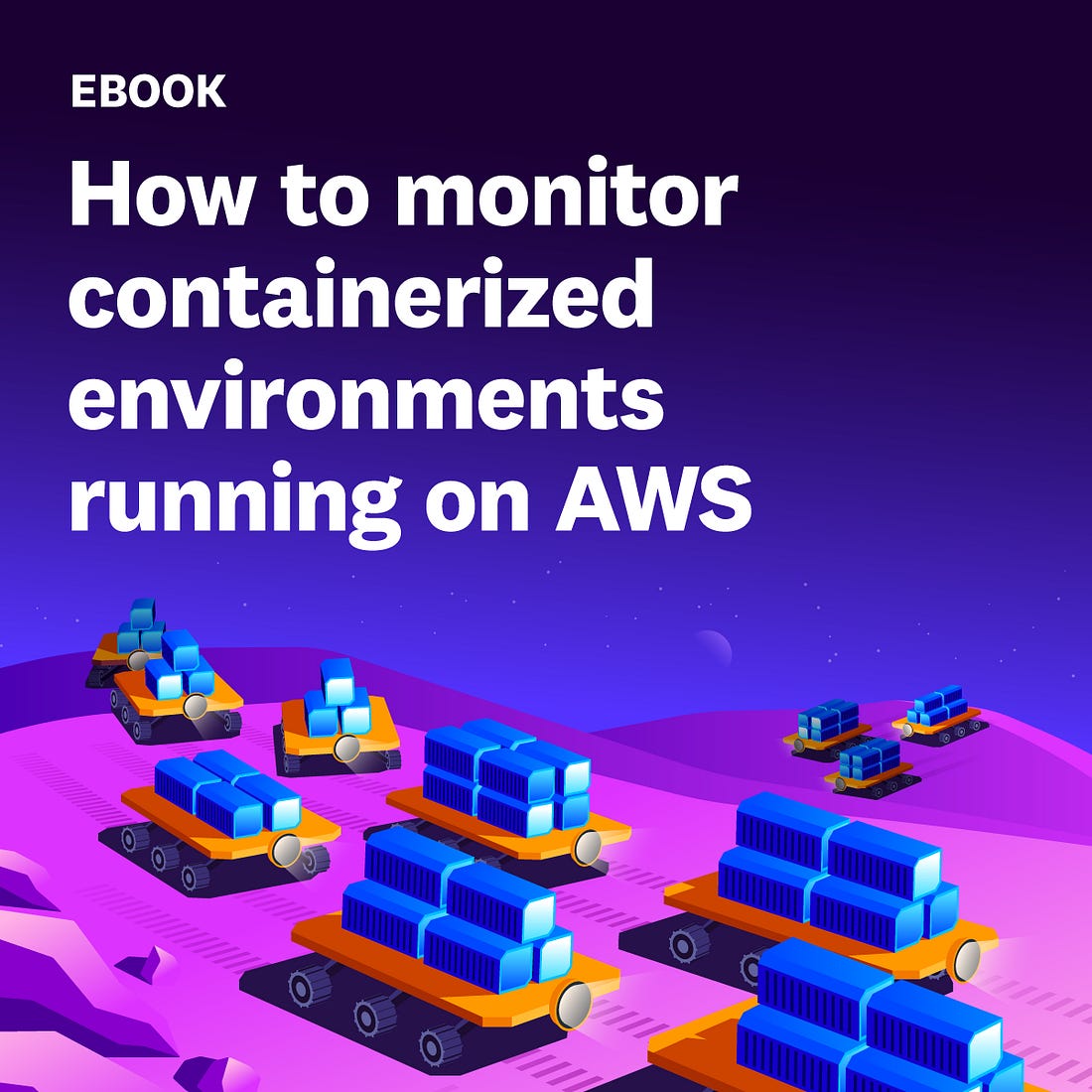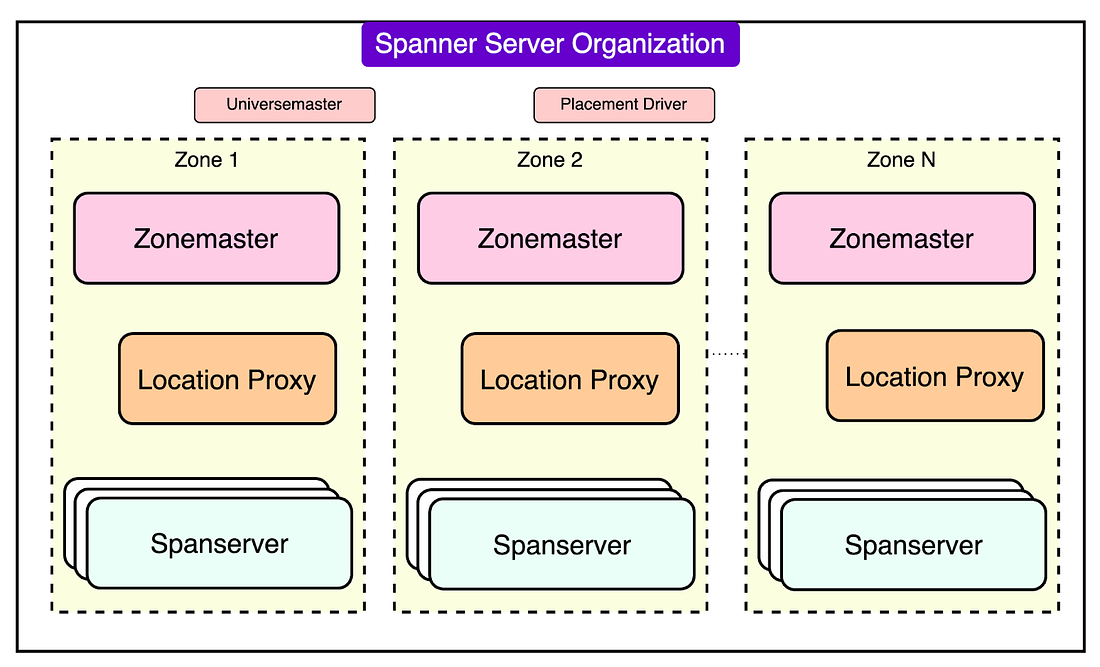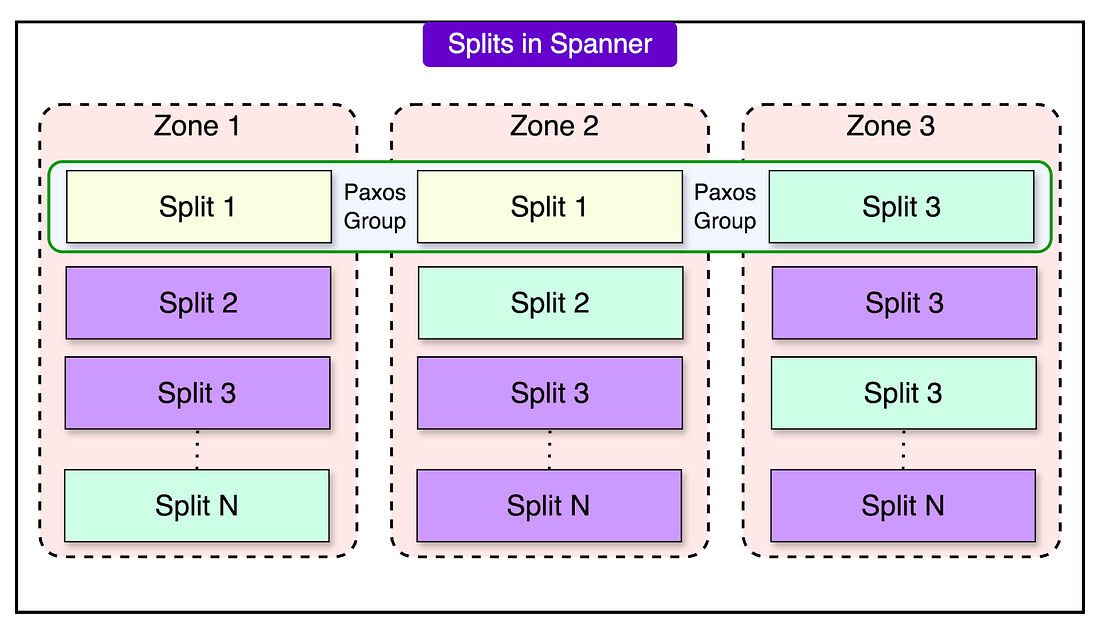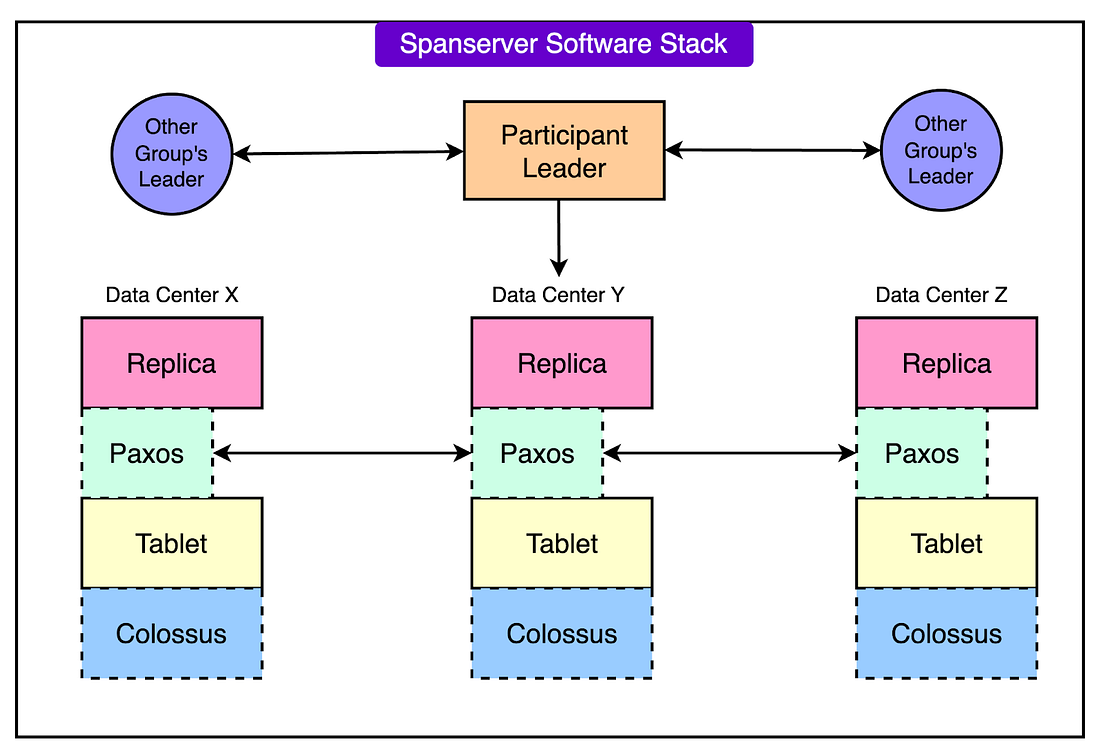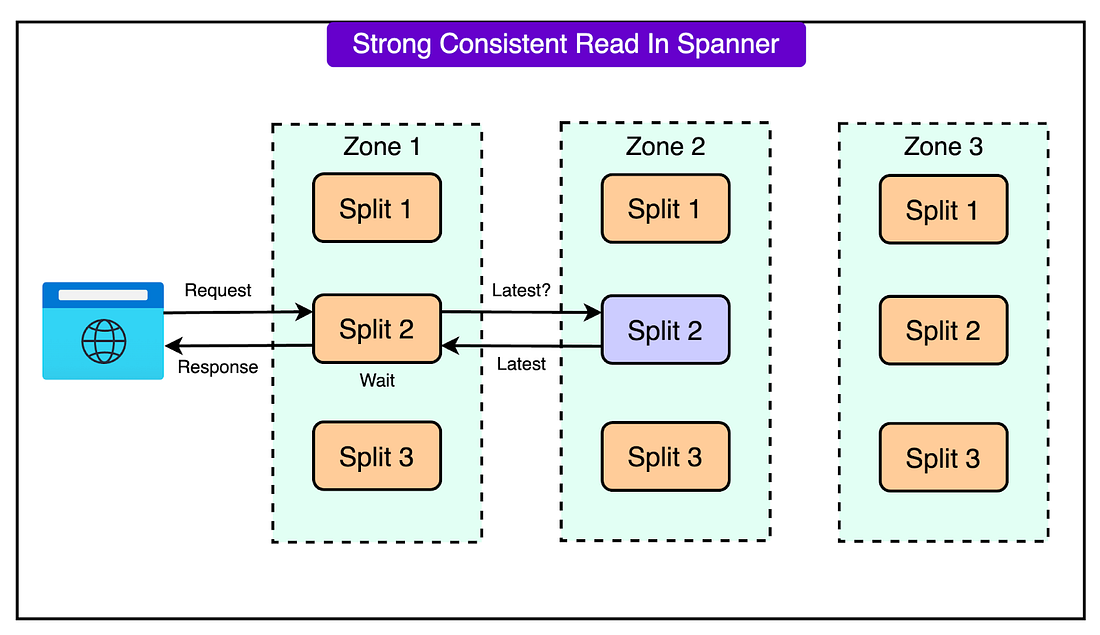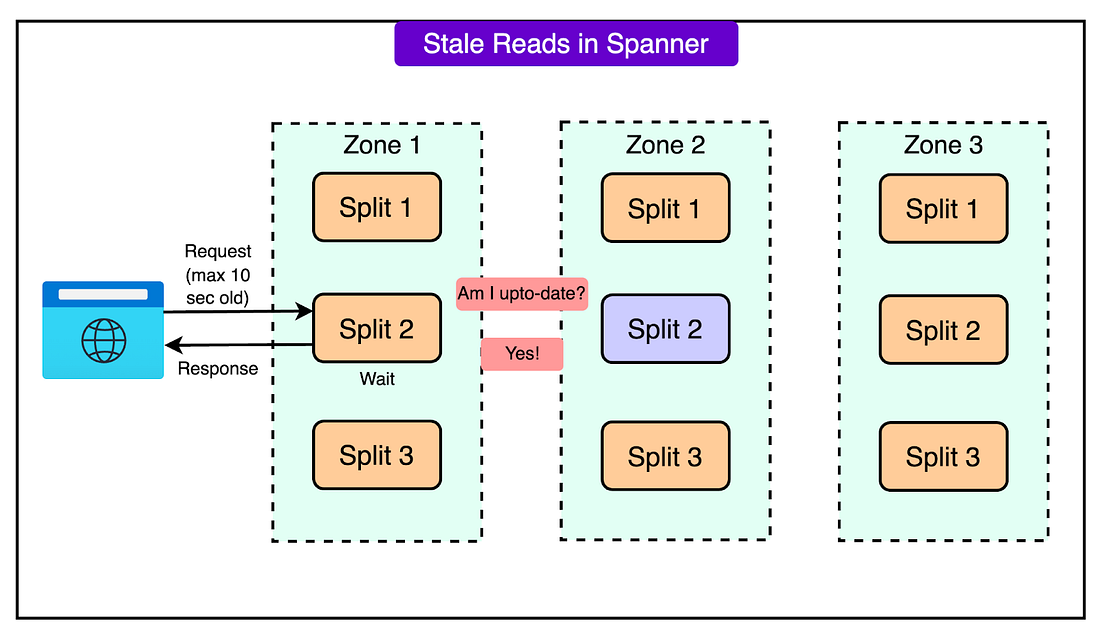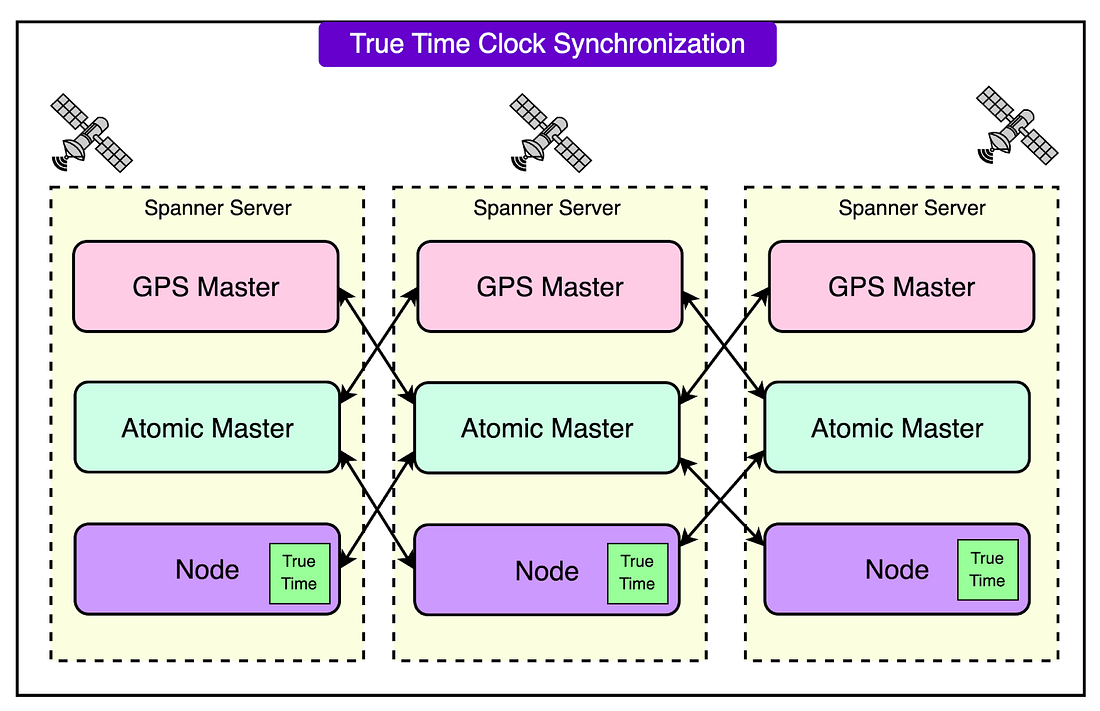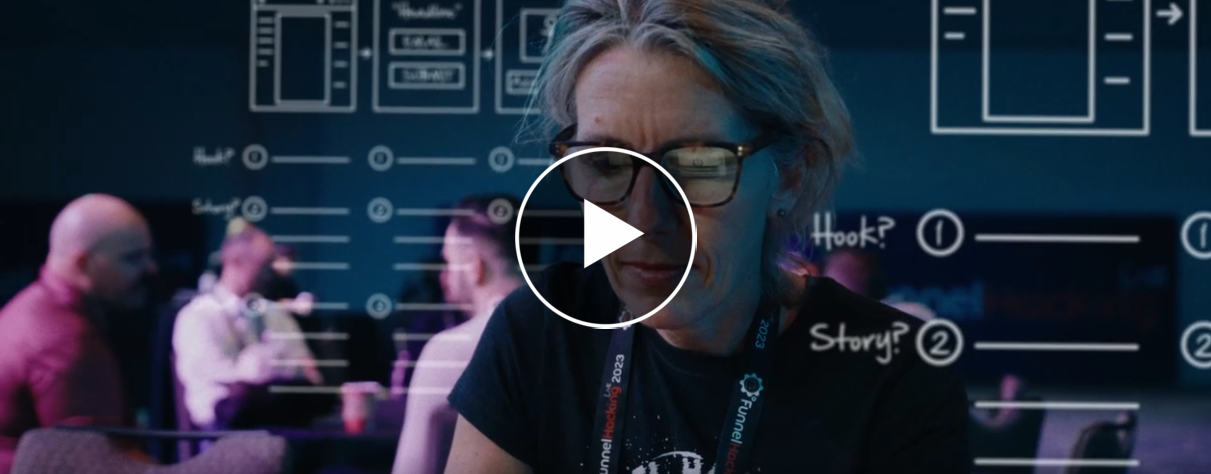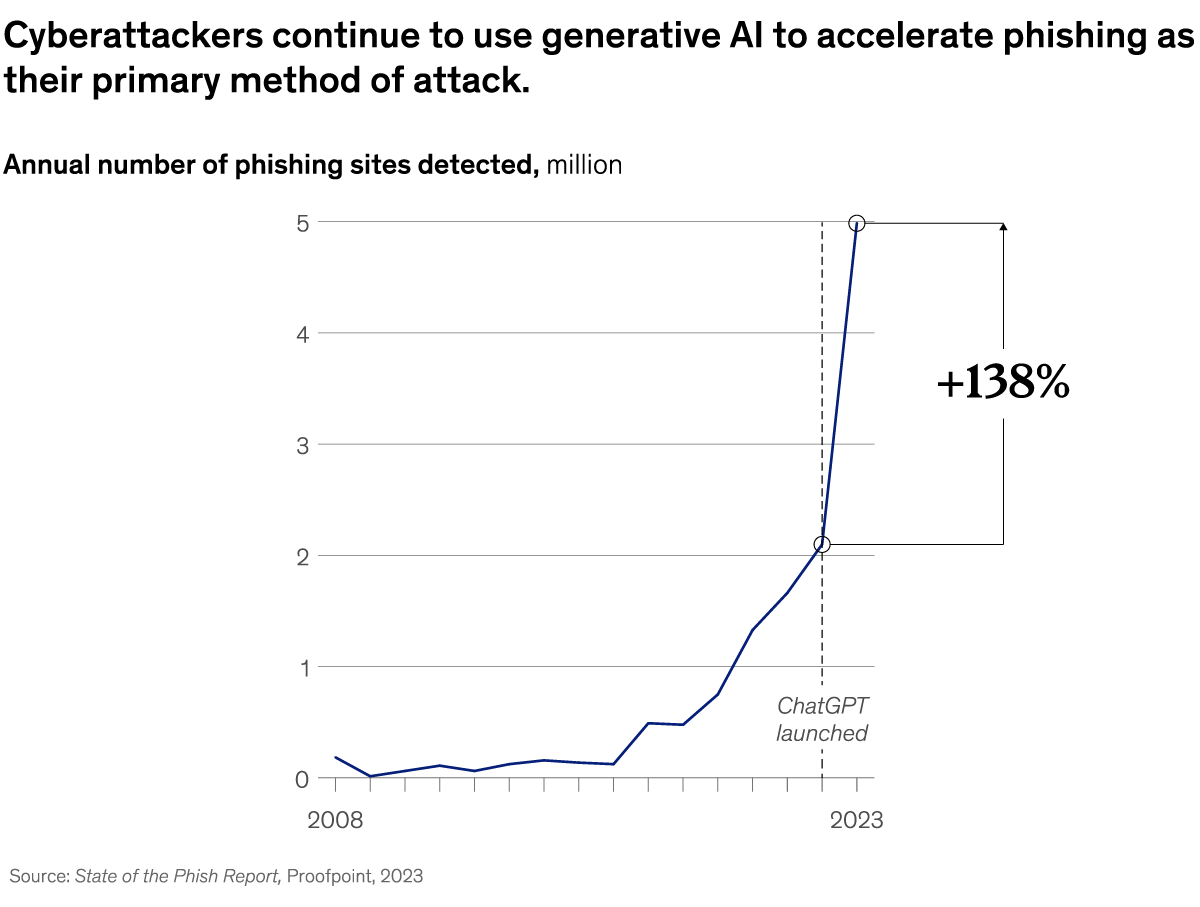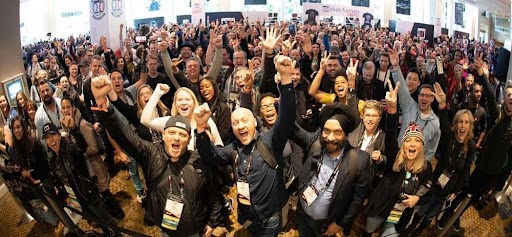Archives
- By thread 5234
-
By date
- June 2021 10
- July 2021 6
- August 2021 20
- September 2021 21
- October 2021 48
- November 2021 40
- December 2021 23
- January 2022 46
- February 2022 80
- March 2022 109
- April 2022 100
- May 2022 97
- June 2022 105
- July 2022 82
- August 2022 95
- September 2022 103
- October 2022 117
- November 2022 115
- December 2022 102
- January 2023 88
- February 2023 90
- March 2023 116
- April 2023 97
- May 2023 159
- June 2023 145
- July 2023 120
- August 2023 90
- September 2023 102
- October 2023 106
- November 2023 100
- December 2023 74
- January 2024 75
- February 2024 75
- March 2024 78
- April 2024 74
- May 2024 108
- June 2024 98
- July 2024 116
- August 2024 134
- September 2024 130
- October 2024 141
- November 2024 171
- December 2024 115
- January 2025 216
- February 2025 140
- March 2025 220
- April 2025 233
- May 2025 239
- June 2025 303
- July 2025 46
-
Major announcements coming next week at SAP Business Unleashed
SAP will share the next era of AI, data, and applications – here are 3 reasons you should attend.

Are you ready to unleash
the full potential of your business?Register today for SAP Business Unleashed
and don’t miss the opportunity to:Hear firsthand from SAP leaders, industry experts, and global organizations Accenture, IDC, and Henkel, as they share their stories and dive into breakthrough strategies that will showcase how SAP can help you integrate and optimize every part of your business seamlessly.

Julie
SweetChair and Chief Executive Officer
AccentureMickey
North-RizzaGroup Vice President, Enterprise Software
IDCMarkus
HartmannCVP Head of Business Technology & Head of Regions Europe & APAC & IMEA
HenkelDimitri
LernerCorporate Director,
Value Chain Platform
HenkelBe among the first to hear the hot-off-the-press announcements on SAP’s bold new vision. Grab a front row seat to explore the next era of enterprise management and discover how SAP combines AI, data, and applications like never before to unleash your full potential and make you unstoppable.
Watch brand-new product demos and have your questions answered by SAP experts. Witness the launch of a new solution that connects and harmonizes all your data and explore how Joule, our copilot, deploys AI agents across your organization.
You won’t want to miss this –
secure your free virtual seat today.
Pro Tip:
If you can’t make the live webinar, please be sure
to register anyway and we’ll send you the replaySAP (Legal Disclosure | SAP)
This e-mail may contain trade secrets or privileged, undisclosed, or otherwise confidential information. If you have received this e-mail in error, you are hereby notified that any review, copying, or distribution of it is strictly prohibited. Please inform us immediately and destroy the original transmittal. Thank you for your cooperation.You are receiving this e-mail for one or more of the following reasons: you are an SAP customer, you were an SAP customer, SAP was asked to contact you by one of your colleagues, you expressed interest in one or more of our products or services, or you participated in or expressed interest to participate in a webinar, seminar, or event. SAP Privacy Statement
This e-mail was sent to you on behalf of the SAP Group with which you have a business relationship. If you would like to have more information about your Data Controller(s) please click here to contact webmaster@sap.com.
This promotional e-mail was sent to you by SAP Global Marketing and provides information on SAP's products and services that may be of interest to you. If you would prefer not to receive such e-mails from SAP in the future, please click on the Unsubscribe link.
To ensure you continue to receive SAP related information properly please add sap@mailsap.com to your address book or safe senders list.

by "SAP Business Unleashed" <sap@mailsap.com> - 11:08 - 4 Feb 2025 -
How Google Spanner Powers Trillions of Rows with 5 Nines Availability
How Google Spanner Powers Trillions of Rows with 5 Nines Availability
How to monitor AWS container environments at scale (Sponsored)͏ ͏ ͏ ͏ ͏ ͏ ͏ ͏ ͏ ͏ ͏ ͏ ͏ ͏ ͏ ͏ ͏ ͏ ͏ ͏ ͏ ͏ ͏ ͏ ͏ ͏ ͏ ͏ ͏ ͏ ͏ ͏ ͏ ͏ ͏ ͏ ͏ ͏ ͏ ͏ ͏ ͏ ͏ ͏ ͏ ͏ ͏ ͏ ͏ ͏ ͏ ͏ ͏ ͏ ͏ ͏ ͏ ͏ ͏ ͏ ͏ ͏ ͏ ͏ ͏ ͏ ͏ ͏ ͏ ͏ ͏ ͏ ͏ ͏ ͏ ͏ ͏ ͏ ͏ ͏ ͏ ͏ ͏ ͏ ͏ ͏ ͏ ͏ ͏ ͏ ͏ ͏ ͏ ͏ ͏ ͏ ͏ ͏ ͏ ͏ ͏ ͏ ͏ ͏ ͏ ͏ ͏ ͏ ͏ ͏ ͏ ͏ ͏ ͏ ͏ ͏ ͏ ͏ ͏ ͏ ͏ ͏ ͏ ͏ ͏ ͏ ͏ ͏ ͏ ͏ ͏ ͏ ͏ ͏ ͏ ͏ ͏ ͏ ͏ ͏ ͏ ͏ ͏ ͏ ͏ ͏ ͏ ͏ ͏ ͏ ͏ ͏ ͏ ͏ ͏ ͏ ͏ ͏ ͏ ͏ ͏ ͏ ͏ ͏ ͏ ͏ ͏ ͏ ͏ ͏ ͏ ͏ ͏ ͏ ͏ ͏ ͏ ͏ ͏ ͏ ͏ ͏ ͏ ͏ ͏ ͏ ͏ ͏ ͏ ͏ ͏ ͏ ͏ ͏ ͏ ͏ ͏ ͏ ͏ ͏ Forwarded this email? Subscribe here for moreHow to monitor AWS container environments at scale (Sponsored)
In this eBook, Datadog and AWS share insights into the changing state of containers in the cloud and explore why orchestration technologies are an essential part of managing ever-changing containerized workloads.
Learn more about:
Strategies for successfully tracking containerized AWS applications at scale
Key metrics to monitor for Amazon Elastic Container Service (ECS) and Amazon Elastic Kubernetes Service (EKS)
Enabling comprehensive monitoring for AWS container environments with Datadog
Disclaimer: The details in this post have been derived from Google Blogs and Research Papers. All credit for the technical details goes to the Google engineering team. The links to the original articles are present in the references section at the end of the post. We’ve attempted to analyze the details and provide our input about them. If you find any inaccuracies or omissions, please leave a comment, and we will do our best to fix them.
Cloud Spanner is a revolutionary database system developed by Google that uniquely combines the strengths of traditional relational databases with the scalability typically associated with NoSQL systems.
Designed to handle massive workloads across multiple regions, Cloud Spanner provides a globally distributed, strongly consistent, and highly available platform for data management. Its standout feature is its ability to offer SQL-based queries and relational database structures while achieving horizontal scalability. This makes it suitable for modern, high-demand applications.
Here are some features of Cloud Spanner:
A multi-version database that uses synchronous replication to ensure data durability and availability even in the case of regional failures.
Use of TrueTime, a technology that integrates GPS and atomic clocks to provide a globally consistent timeline.
Spanner simplifies data management by offering a familiar SQL interface for queries while handling the complexities of distributed data processing under the hood.
Spanner partitions its data into contiguous key ranges, called splits, which are dynamically resharded to balance the load and optimize performance.
Overall, Google Spanner is a powerful solution for enterprises that need a database capable of handling global-scale operations while maintaining the robustness and reliability of traditional relational systems.
In this article, we’ll learn about Google Cloud Spanner's architecture and how it supports the various capabilities that make it a compelling database option.
The Architecture of Cloud Spanner
The architecture of Cloud Spanner is designed to support its role as a globally distributed, highly consistent, and scalable database.
At the highest level, Spanner is organized into what is called a universe, a logical entity that spans multiple physical or logical locations known as zones.
Each zone operates semi-independently and contains spanservers. These are specialized servers that handle data storage and transactional operations. Spanservers are built on concepts from Bigtable, Google’s earlier distributed storage system, and include enhancements to support complex transactional needs and multi-versioned data.
Some of the key architectural components of Spanner are as follows:
1 - Data Sharding and Tablets
Cloud Spanner manages data by breaking it into smaller chunks called tablets, distributed across multiple spanservers.
Each tablet holds data as key-value pairs, with a timestamp for versioning. This structure allows Spanner to act as a multi-version database where old versions of data can be accessed if needed.
Tablets are stored on Colossus, Google’s distributed file system. Colossus provides fault-tolerant and high-performance storage, enabling Spanner to scale storage independently of compute resources.
2 - Dynamic Partitioning
Data within tables is divided into splits, which are ranges of contiguous keys. These splits can be dynamically adjusted based on workload or size.
When a split grows too large or experiences high traffic, it is automatically divided into smaller splits and redistributed across spanservers. This process, known as dynamic sharding, ensures even load distribution and optimal performance.
Each split is replicated across zones for redundancy and fault tolerance.
3 - Paxos-Based Replication
Spanner uses the Paxos consensus algorithm to manage replication across multiple zones. Each split has multiple replicas, and Paxos ensures that these replicas remain consistent.
Among these replicas, one is chosen as the leader, responsible for managing all write transactions for that split. The leader coordinates updates to ensure they are applied in a consistent order.
If the leader fails, Paxos elects a new leader, ensuring continued availability without manual intervention. The replicas not serving as leaders can handle read operations, reducing the workload on the leader and improving scalability.
4 - Multi-Zone Deployments
Spanner instances span multiple zones within a region, with replicas distributed across these zones. This setup enhances availability because even if one zone fails, other zones can continue serving requests.
For global deployments, data can be replicated across continents, providing low-latency access to users worldwide.
5 - Colossus Distributed File System
All data is stored on Colossus, which is designed for distributed and replicated file storage. Colossus ensures high durability by replicating data across physical machines, making it resilient to hardware failures.
The file system is decoupled from the compute resources, allowing the database to scale independently and perform efficiently.
Paxos Mechanism in Spanner
The Paxos Mechanism is a critical component of Spanner’s architecture.
It operates on the principle of distributed consensus, where a group of replicas (known as a Paxos group) agrees on a single value, such as a transaction's commit or the leader responsible for handling updates.
The leadership assignment works as follows:
Each split of data (a contiguous range of keys) is associated with a Paxos group that spans multiple zones.
One replica in the Paxos group is designated as the leader. The leader handles all write operations for its split, ensuring that updates are coordinated.
Other replicas serve as followers, which can process read requests to offload work from the leader and improve performance.
The key responsibilities of the Paxos Leader are as follows:
Handling Writes: The leader receives write requests and ensures they are replicated to a majority of the Paxos group before being committed. This replication process ensures the durability and consistency of the data, even if some replicas fail.
Maintaining Order: The leader assigns timestamps to transactions using TrueTime for a globally consistent ordering of writes.
Communication with Followers: The leader coordinates updates by broadcasting proposals to the followers and collecting acknowledgments.
Failures are inevitable in distributed systems, but Paxos ensures that Spanner remains available and consistent despite such issues.
If the current leader fails due to a machine or zone outage, the Paxos group detects the failure and elects a new leader. The new leader is chosen from the remaining replicas in the Paxos group. This process avoids downtime and ensures that the data remains accessible.
Read and Write Transactions in Spanner
Cloud Spanner manages transactions with a robust approach that ensures strong consistency, reliability, and high performance.
Let’s look at how write and read transactions work in more detail:
1 - Write Transactions
Write transactions in Cloud Spanner are designed to guarantee atomicity (all-or-nothing execution) and consistency (all replicas agree on the data). These transactions are managed by Paxos leaders coordinating the process to ensure data integrity even during failures.
Here are the steps involved in the process:
Acquiring Locks: Before making changes, the Paxos leader for a split acquires a write lock on the rows being modified. If another transaction holds a conflicting lock, the current transaction will wait until the lock is released.
Assigning Timestamps via TrueTime: TrueTime assigns a globally consistent timestamp to the transaction. This timestamp guarantees that the transaction’s changes are applied in the correct order relative to other transactions. The timestamp is greater than any previously committed transaction, ensuring temporal consistency.
Durability with Majority Replication: Once the leader has locked the data and assigned a timestamp, it sends the transaction details to a majority of replicas in its Paxos group. The transaction is only considered committed after the majority acknowledges it, guaranteeing the data is durable even if some replicas fail.
Commit Wait: The leader waits for a brief period to ensure that the commit timestamp is in the past for all replicas. This step makes sure that once the transaction is committed, all subsequent reads will reflect its effects.
There is some difference in the way Spanner handles single-split write versus multi-split write.
For example, in a single-split write, suppose a user wants to add a row with ID 7 and value "Seven" to a table.
The Spanner API identifies the split containing ID 7 and sends the request to its Paxos leader.
The leader acquires a lock on ID 7, assigns a timestamp via TrueTime, and replicates the changes to a majority of replicas.
After ensuring the timestamp has passed, the transaction is committed, and all replicas apply the change.
However, for a multi-split write, if a transaction modifies rows in multiple splits (for example, writing to rows 2000, 3000, and 4000), Spanner uses a two-phase commit protocol:
Each split becomes a participant in the transaction, and one split’s leader acts as the coordinator.
The coordinator ensures all participants acquire locks and agree to commit the transaction before proceeding.
Once all participants confirm, the coordinator commits the transaction and informs the others to apply the changes.
2 - Read Transactions
Read transactions in Spanner are optimized for speed and scalability. They provide strong consistency without requiring locks, which allows reads to be processed efficiently even under high workloads.
The different types of reads are as follows:
Strong Reads: These reads always return the latest committed data. The system ensures consistency by verifying the latest timestamp of the data using TrueTime. For example, if a client requests a value for row ID 1000, the system routes the request to a replica, which checks with the leader to confirm the data is up-to-date before returning the result.
Stale Reads: These reads allow a small degree of staleness (for example, data up to 10 seconds old) in exchange for lower latency. For instance, a client requesting a slightly older value for row ID 1000 can get the data directly from a replica without waiting for confirmation from the leader, speeding up the process.
See the diagram below that shows the strong consistent read scenario.
Also, the diagram below shows the stale reads scenario.
3 - Deadlock Prevention
Spanner avoids deadlocks—a situation where two or more transactions wait for each other to release locks—by using the wound-wait algorithm. Here’s how it works:
If a younger transaction (started later) requests a lock held by an older transaction, it waits.
If an older transaction requests a lock held by a younger one, the younger transaction is wounded (aborted) to allow the older one to proceed.
This strategy ensures that transactions always make progress and deadlock cycles do not occur.
4 - Reliability and Durability
Spanner’s design ensures that data remains consistent and available even during failures.
All writes are stored in Google’s Colossus distributed file system, which replicates data across multiple physical machines. Even if one machine or zone fails, the data can be recovered from other replicas.
TrueTime ensures that all transactions occur in a globally consistent order, even in a distributed environment. This guarantees that once a transaction is visible to one client, it is visible to all clients.
The TrueTime API
The TrueTime API is one of the key innovations in Cloud Spanner, enabling it to function as a globally distributed, strongly consistent database.
TrueTime solves one of the most challenging problems in distributed systems: providing a globally synchronized and consistent view of time across all nodes in a system, even those spread across multiple regions and data centers.
TrueTime is based on a combination of atomic clocks and GPS clocks, which work together to provide highly accurate and reliable time synchronization.
By using both atomic and GPS clocks, TrueTime mitigates the weaknesses of each system. For example:
If GPS signals are disrupted, atomic clocks ensure accurate timekeeping.
Conversely, GPS clocks help correct any long-term drift in atomic clocks.
Here’s how it works:
Atomic Clocks: These devices measure time-based on the vibrations of atoms, providing highly precise timekeeping with minimal drift. Atomic clocks serve as a reliable backup when GPS signals are unavailable or inaccurate.
GPS Clocks: These clocks rely on signals from satellites to provide accurate time information. GPS clocks are useful because they offer a globally synchronized source of time. However, GPS systems can experience issues such as interference, antenna failures, or even spoofing attacks.
Time Representation and Uncertainty
TrueTime represents time as an interval instead of a single point, explicitly acknowledging the uncertainty inherent in distributed systems.
TTInterval: TrueTime provides a time range, [earliest, latest], which guarantees that the actual global time falls somewhere within this range. The width of the interval is determined by factors such as clock drift and network delays.
Error Bound and Synchronization: The uncertainty interval is kept small (typically under 10 milliseconds) through frequent synchronization. Each server in the system synchronizes its local clock with the time masters (atomic and GPS clocks) approximately every 30 seconds.
Key Features Enabled By TrueTime
TrueTime provides some important features that make it so useful:
Global External Consistency: TrueTime ensures that transactions are serialized in the same global order across all replicas. This is critical for maintaining consistency in a distributed database. For example, if one transaction commits before another transaction starts, TrueTime guarantees the timestamps reflect this order globally.
Lock-Free Transactions: TrueTime allows Spanner to perform lock-free read-only requests. These transactions can access consistent snapshots of data without needing locks, improving scalability and performance.
Atomic Schema Updates: Schema changes, such as altering a table structure, are challenging in distributed systems because they often involve many servers. With TrueTime, schema updates are treated as transactions with a specific timestamp, ensuring that all servers apply the change consistently.
Historical Reads: TrueTime enables snapshot reads, where clients can specify a timestamp to read a consistent view of the database as it existed at that time. This is useful for audits or debugging.
Conclusion
Google Spanner stands as a great achievement in database engineering, seamlessly blending the reliability and structure of traditional relational databases with the scalability and global availability often associated with NoSQL systems.
Its innovative architecture, supported by the Paxos consensus mechanism and the TrueTime API, provides a great foundation for handling distributed transactions, ensuring external consistency, and maintaining high performance at a global scale.
Ultimately, Google Spanner redefines what is possible in distributed database systems, setting a standard for scalability, reliability, and innovation.
References:
SPONSOR US
Get your product in front of more than 1,000,000 tech professionals.
Our newsletter puts your products and services directly in front of an audience that matters - hundreds of thousands of engineering leaders and senior engineers - who have influence over significant tech decisions and big purchases.
Space Fills Up Fast - Reserve Today
Ad spots typically sell out about 4 weeks in advance. To ensure your ad reaches this influential audience, reserve your space now by emailing sponsorship@bytebytego.com.
Like
Comment
Restack
© 2025 ByteByteGo
548 Market Street PMB 72296, San Francisco, CA 94104
Unsubscribe
by "ByteByteGo" <bytebytego@substack.com> - 11:37 - 4 Feb 2025 -
The future of leadership: Get the latest issue of the McKinsey Quarterly
Explore the issue The second of four special issues celebrating the 60th birthday of McKinsey Quarterly, “The future of leadership,” explores the evolving leader. In the cover story, “The art of 21st-century leadership: From succession planning to building a leadership factory,” McKinsey’s Bob Sternfels, Daniel Pacthod, Kurt Strovink, and Wyman Howard explain why today’s leadership model differs from the past, and synthesize the character, craft, and structure needed for leaders to succeed in today’s volatile atmosphere. You’ll also find a look into how to upgrade your personal operating model, questions every CEO should be able to answer, the tenth anniversary of the Women in the Workplace report, and much more.
Since 1964, the McKinsey Quarterly has brought our firm’s most distinctive, cross-cutting insights to global executives. We’re delighted to continue a yearlong celebration commemorating the Quarterly’s 60th birthday with this second issue. Sign up for a free digital Quarterly membership today and unlock access to “Q60,” a yearlong series. Here's what you’ll get:
•
Q60 special issues: Dive deep into themes shaping the future of business, with each issue dedicated to a critical topic.
•
Bonus digital offerings: Engage with special interactive features and explore compilations of timeless Quarterly classics, many of which were available only in print until now.
•
Immersive digital reading experience: Enjoy each Quarterly issue online.
And don’t miss the newly released interactive timeline “The future of the office” for a deep dive into what happened and what could be next in office real estate and beyond.
A membership to the digital edition of the McKinsey Quarterly also includes downloads of more than 100 reports in The McKinsey Insights Store as well as access to the previous digital issues of the Quarterly.
This email contains information about McKinsey’s research, insights, services, or events. By opening our emails or clicking on links, you agree to our use of cookies and web tracking technology. For more information on how we use and protect your information, please review our privacy policy.
You received this email because you subscribed to our McKinsey Quarterly alert list.
Copyright © 2025 | McKinsey & Company, 3 World Trade Center, 175 Greenwich Street, New York, NY 10007
by "McKinsey Quarterly" <publishing@email.mckinsey.com> - 10:36 - 4 Feb 2025 -
Luxury in 2025: What do experts predict for the industry this year?
On McKinsey Perspectives
5 strategic imperatives Brought to you by Alex Panas, global leader of industries, & Axel Karlsson, global leader of functional practices and growth platforms
Welcome to the latest edition of Only McKinsey Perspectives. We hope you find our insights useful. Let us know what you think at Alex_Panas@McKinsey.com and Axel_Karlsson@McKinsey.com.
—Alex and Axel
—Edited by Belinda Yu, editor, Atlanta
This email contains information about McKinsey's research, insights, services, or events. By opening our emails or clicking on links, you agree to our use of cookies and web tracking technology. For more information on how we use and protect your information, please review our privacy policy.
You received this email because you subscribed to the Only McKinsey Perspectives newsletter, formerly known as Only McKinsey.
Copyright © 2025 | McKinsey & Company, 3 World Trade Center, 175 Greenwich Street, New York, NY 10007
by "Only McKinsey Perspectives" <publishing@email.mckinsey.com> - 01:14 - 4 Feb 2025 -
NEW GLASS TECH CHANGE THE WORLD
Dear info,
It is our pleasure to visit your website. I believe our products will fit your market.
This is Daryl from Shanghai Haocheng Import and Export CO,.LTD, rare earth products divisin,we are rare earth products manufacturer and exporter from China, we have 10 years of industry experience and established ourselves as a reliable partner for clients in the electronics, automotive,Construction business, etc.sectors worldwide.
Currently, we have a special heat-resistant rare earth film specifically designed for glass. Our products are mainly divided into two categories. One is a heat-resistant rare earth building film for building glass retrofitting, which can achieve the effect of heat insulation without replacing the glass. The other is a laminated film for new buildings, which can replace the traditional laminated layer and achieve the effect of heat insulation.
Here are the highlights of our products:
High-efficiency insulation: The application of rare earth materials makes the glass film have excellent insulation performance, significantly reducing indoor temperature and reducing air conditioning energy consumption.
Groundbreaking heat insulation principle: Unlike the heat insulation principle of traditional Lowe glass, the heat insulation principle of rare earth element film is not full reflection of light, but the resonance action of rare earth elements with light's plasma, so our film has spectral selectivity.
Spectral selectivity: While effectively blocking near infrared and strong ultraviolet rays, beneficial far infrared rays and weak ultraviolet rays can enter the room.
Sun protection and UV protection: Effectively block more than 99% of ultraviolet rays, protecting human skin and furniture from ultraviolet damage.
Clear vision: Ensure the transparency and clarity of the glass film while ensuring the heat insulation effect, without affecting the line of sight.
Safety and explosion prevention: Enhance the strength of the glass and improve the impact resistance, providing additional security for driving and living.
We are committed to providing customized solutions to meet your diverse needs for insulation, sun protection, and safety. We believe that through our products, your customers will enjoy a superior experience, while bringing higher value to your business.
In order to gain a deeper understanding of your needs and explore potential cooperation opportunities, we are more than willing to arrange an online or offline meeting. Please let us know your convenient time, and we will do our best to prepare a detailed product introduction and sample presentation for you.
Best wishes
Shanghai Haocheng Import and Export CO,.LTD
by "general" <general@haochengscience.com> - 09:35 - 3 Feb 2025 -
The future of AI in talent management starts here
Discover how AI can help transform talent strategies—reserve your spot today The future of talent management is here. Join us for a webinar on March 4, 2025, to explore how AI can help you:
The future of talent management is here. Join us for a webinar on March 4, 2025, to explore how AI can help you:- Build agile, skills-driven teams
- Empower employees with personalized growth and development
- Align talent strategies with business goals
Gain insights from Dr. Katherine Gibbard, a Research Scientist with expertise in workforce psychology, Christina Russo, a leader in AI-driven talent marketing strategies, and Edward Piggott, an innovation specialist in skills and talent intelligence.
Don’t miss this opportunity—register now to learn more.Your Webinar Speakers Dr. Katherine Gibbard, PhD Christina Russo Edward Piggot 

Contact us
See our complete list of local country numbers



SAP (Legal Disclosure | SAP)
This e-mail may contain trade secrets or privileged, undisclosed, or otherwise confidential information. If you have received this e-mail in error, you are hereby notified that any review, copying, or distribution of it is strictly prohibited. Please inform us immediately and destroy the original transmittal. Thank you for your cooperation.
You are receiving this e-mail for one or more of the following reasons: you are an SAP customer, you were an SAP customer, SAP was asked to contact you by one of your colleagues, you expressed interest in one or more of our products or services, or you participated in or expressed interest to participate in a webinar, seminar, or event. SAP Privacy Statement
This email was sent to info@learn.odoo.com on behalf of the SAP Group with which you have a business relationship. If you would like to have more information about your Data Controller(s) please click here to contact webmaster@sap.com.
This offer is extended to you under the condition that your acceptance does not violate any applicable laws or policies within your organization. If you are unsure of whether your acceptance may violate any such laws or policies, we strongly encourage you to seek advice from your ethics or compliance official. For organizations that are unable to accept all or a portion of this complimentary offer and would like to pay for their own expenses, upon request, SAP will provide a reasonable market value and an invoice or other suitable payment process.
This e-mail was sent to info@learn.odoo.com by SAP and provides information on SAP’s products and services that may be of interest to you. If you received this e-mail in error, or if you no longer wish to receive communications from the SAP Group of companies, you can unsubscribe here.
To ensure you continue to receive SAP related information properly, please add sap@mailsap.com to your address book or safe senders list.
by "SAP" <sap@mailsap.com> - 07:03 - 3 Feb 2025 -
WE SOLD OUT OF FHL 10 TICKETS!!
Get on the waitlist….Just woke up…
…And saw that we SOLD OUT Funnel Hacking Live before my team had to double the price of tickets!!!!
If you got your ticket in time, then HECK YEAH!
Can’t wait to see you (and around 5,000 other #funnelhackers from around the world) at Funnel Hacking LIVE in just 9 days!!
If you missed the deadline though…
But still would like to go, there’s ONE more hope for you.
Sometimes, last minute tickets become available as seating gets finalized… people drop out… etc.
And IF that happens, I shoot an email ONLY to people on the “waitlist.”
So it's super important that you put your name and email on the FINAL FHL 10 waitlist if you weren’t able to grab your ticket in time.
Which you can do here:
If you’ll be at FHL 10 THE LAST DANCE, then I’ll see you then!
And if you’re on the waitlist, keep an eagle eye on your email over the next week. 🦅
Talk soon,
Russell Brunson
P.S. - Don’t forget, you’re just one funnel away…
P.P.S. If you skipped to the bottom – we SOLD OUT of tickets for the FHL 10 – THE LAST DANCE!!! But people still drop out or cancel, so if you want to get on the waitlist, then go here now →
First come, first serve on the waitlist… so make sure to get on the list NOW, so if something does open up, you’ll be first to know about it!
© Etison LLC
By reading this, you agree to all of the following: You understand this to be an expression of opinions and not professional advice. You are solely responsible for the use of any content and hold Etison LLC and all members and affiliates harmless in any event or claim.
If you purchase anything through a link in this email, you should assume that we have an affiliate relationship with the company providing the product or service that you purchase, and that we will be paid in some way. We recommend that you do your own independent research before purchasing anything.
Copyright © 2018+ Etison LLC. All Rights Reserved.
To make sure you keep getting these emails, please add us to your address book or whitelist us. If you don't want to receive any other emails, click on the unsubscribe link below.
Etison LLC
3443 W Bavaria St
Eagle, ID 83616
United States
by "Russell Brunson" <noreply@clickfunnelsnotifications.com> - 11:47 - 3 Feb 2025 -
Increase the performance of your AWS environment with New Relic
Hi MD,
I’d like to personally invite you to my upcoming 60 minute online webinar, One-step Observability for AWS with New Relic on Thursday February 6 at 10am GMT / 11am CET.
I will be demonstrating our one-step AWS onboarding and how you can automate instrumentation for logs and metrics using CloudFormation templates and agentless EC2 monitoring.
You’ll also get a sneak peek at our latest integration connecting New Relic AI, our in-platform generative AI assistant, into Amazon Q Business, AWS’ enterprise generative AI assistant for streamlining complex workflows.
My colleague Patrick Schrimpf will be running a session on how to improve Azure performance and manage cloud costs with New Relic on Tuesday February 4th.
Feel free to extend the invite to your peers and team mates. Sign up now and I hope to see you there.
Thanks,
Michael Bean
Principal Solutions Consultant
This email was sent to info@learn.odoo.com · · View this online
This email was sent to info@learn.odoo.com. If you no longer wish to receive these emails, click on the following link: Unsubscribe
by "Michael Bean, New Relic" <emeamarketing@newrelic.com> - 05:00 - 3 Feb 2025 -
Demographic shifts in the workforce: A leader’s guide
Leading Off
Adapt and adjust Brought to you by Alex Panas, global leader of industries, & Axel Karlsson, global leader of functional practices and growth platforms
Welcome to the latest edition of Leading Off. We hope you find our insights useful. Let us know what you think at Alex_Panas@McKinsey.com and Axel_Karlsson@McKinsey.com.
—Alex and Axel
Of late, leaders have paid much attention to Gen Z’s entrance into the workforce, seeking to learn more about their youngest employees’ attitudes and motivations. But the future of work is not just a youth movement. Massive demographic shifts, such as increasing longevity and tightening labor markets, are expected to result in a growing share of older employees in the workforce. To account for these shifts and maintain growth, organizations will need to develop new strategies to boost productivity and increase labor intensity. This week, we look at how leaders can address the challenges of an aging workforce as the population transforms.
With fertility rates falling and people living longer, the world’s population is growing older—and changing the face of the workforce. The share of older people in the workforce will likely increase as the traditional working-age population (ages 15 to 64) shrinks, according to a McKinsey Global Institute report from McKinsey’s Anu Madgavkar, Chris Bradley, Olivia White, Sven Smit, and coauthors. Their analysis found that the first wave of this demographic shift is already occurring in advanced economies and China, where the share of working-age people is predicted to drop to 59 percent in 2050, compared with 67 percent today. The authors say that organizations should find ways to tailor their work practices to gain a competitive advantage. “With more older people in their workforces, businesses will need to adapt career planning, reorganize teams, encourage lifelong learning, and expand and adjust retraining programs,” they observe.
That’s the percentage of older adults (those aged 55 and older) who report being employed and also in good or very good health, according to a McKinsey Health Institute survey of more than 21,000 older adults across 21 countries. By comparison, 65 percent of respondents who are not employed (but want to be) report being in good or very good health. McKinsey senior partner Hemant Ahlawat and coauthors note that participating in social activities—such as volunteering, engaging in community programs, and furthering their education—also aligns with better-perceived health in older adults.
That’s McKinsey partner Bryan Hancock on how technology can help address worker shortages in skilled trades, such as carpentry, plumbing, and building. Workers in the United States are retiring later, in part because work is less physically demanding—but not in the skilled trades. In an episode of the McKinsey Talks Talent podcast, Hancock notes that automating some tasks can help reduce the physical toll on tradespeople and keep them on the job longer. At the same time, he says, employers will also need to help older workers feel engaged and find meaning in their work.
Gen Z workers love AI, while Gen Xers and baby boomers worry that the technology will take their jobs. Fair assumptions, right? Not according to a survey that found that a larger share of younger people fear the impact of AI at work, compared with their older peers who have already lived through tech-led transformations and changes in the workplace. This can serve as a good reminder for leaders to avoid buying into generational stereotypes. In a McKinsey survey of more than 30,000 global workers, senior partner Aaron De Smet and coauthors found that people’s expectations and needs at work are largely similar across age groups. Rather than focusing on broad generational labels, the authors say organizations should “take action on the factors that nearly all employees want—namely, compensation, career development, caring leadership, flexibility, and meaningful work—while appreciating the nuances of how they want them.”
Lead by supporting older workers.
— Edited by Eric Quiñones, senior editor, New York
Share these insights
Did you enjoy this newsletter? Forward it to colleagues and friends so they can subscribe too. Was this issue forwarded to you? Sign up for it and sample our 40+ other free email subscriptions here.
This email contains information about McKinsey’s research, insights, services, or events. By opening our emails or clicking on links, you agree to our use of cookies and web tracking technology. For more information on how we use and protect your information, please review our privacy policy.
You received this email because you subscribed to the Leading Off newsletter.
Copyright © 2025 | McKinsey & Company, 3 World Trade Center, 175 Greenwich Street, New York, NY 10007
by "McKinsey Leading Off" <publishing@email.mckinsey.com> - 04:14 - 3 Feb 2025 -
The value of investing in employee health
On McKinsey Perspectives
New research Brought to you by Alex Panas, global leader of industries, & Axel Karlsson, global leader of functional practices and growth platforms
Welcome to the latest edition of Only McKinsey Perspectives. We hope you find our insights useful. Let us know what you think at Alex_Panas@McKinsey.com and Axel_Karlsson@McKinsey.com.
—Alex and Axel
•
Less than healthy. A workforce that’s healthy, resilient, and adaptable is better able to navigate the uncertainties and challenges of a rapidly changing world. Yet in a McKinsey Health Institute (MHI) survey of more than 30,000 global employees, only 57% reported good holistic health (that is, being physically, socially, spiritually, and mentally well). McKinsey Senior Partners Brooke Weddle and Shail Thaker and coauthors explain that with the wide variation in health outcomes across levels of education, income, and other demographic variables, improving workforce health often requires both systemic and tailored interventions.
—Edited by Belinda Yu, editor, Atlanta
This email contains information about McKinsey's research, insights, services, or events. By opening our emails or clicking on links, you agree to our use of cookies and web tracking technology. For more information on how we use and protect your information, please review our privacy policy.
You received this email because you subscribed to the Only McKinsey Perspectives newsletter, formerly known as Only McKinsey.
Copyright © 2025 | McKinsey & Company, 3 World Trade Center, 175 Greenwich Street, New York, NY 10007
by "Only McKinsey Perspectives" <publishing@email.mckinsey.com> - 01:35 - 3 Feb 2025 -
4 hours left!! (Selling out now or pay DOUBLE)
Warning, there are only 38 tickets remaining…I can’t believe it – it’s finally here…
This is officially THE FINAL email pushing you to grab one of the FINAL tickets to the FINAL Funnel Hacking LIVE!!!
So many finales it’s like the end of The Lord of The Rings!!
(I’m gonna take a moment to shed a tear ;)
Now, it wouldn’t be an official FINAL email if I didn’t tell you the bad news…
We only have 37 in-person tickets available.
We have sold out every year…
…and this was the fastest and craziest “sell out” I’ve seen (and it makes sense, seeing this is the LAST FHL).
If you’re planning on coming to Funnel Hacking LIVE… and for some reason haven’t gotten your tickets yet, then I’d recommend grabbing yours right now (literally, RIGHT NOW)…
>> Get Your FHL LAST DANCE Ticket Now <<
In 4 hours (if we don’t sell out before then) the price will be 2X what they are now…
And FHL is just days away…
So chances are, these last 37 tickets will be snapped up in no time.
So, what are you waiting for? LET'S GOOOOO!!!
I can’t emphasize enough…
This is it.
People will be talking about this event for YEARS AND YEARS to come.
People will be walking away from Vegas with a COMPLETELY new perspective on life, business, relationships…
FHL 10 – The Last Dance – could be the beginning of your NEW trajectory in life.
It’s up to you.
While I would want to savor this moment, seeing as this is the last email about the last FHL…
I have to go prepare the final touches on my presentations I know will be the next game-changer in the marketing world.
So with that said… if you want to have a thriving 2025, unleash your full potential, and have the business you’ve always wanted…
…then I’ll see you in Vegas.
Don’t forget: you have until midnight tonight before the price doubles.
See you next week!
Russell Brunson
P.S. - Don’t forget, you’re just one funnel away…
P.P.S. FHL ticket PRICE DOUBLES in 4 hours – get your ticket NOW before we sell out (or you pay double) →
© Etison LLC
By reading this, you agree to all of the following: You understand this to be an expression of opinions and not professional advice. You are solely responsible for the use of any content and hold Etison LLC and all members and affiliates harmless in any event or claim.
If you purchase anything through a link in this email, you should assume that we have an affiliate relationship with the company providing the product or service that you purchase, and that we will be paid in some way. We recommend that you do your own independent research before purchasing anything.
Copyright © 2018+ Etison LLC. All Rights Reserved.
To make sure you keep getting these emails, please add us to your address book or whitelist us. If you don't want to receive any other emails, click on the unsubscribe link below.
Etison LLC
3443 W Bavaria St
Eagle, ID 83616
United States
by "Russell Brunson" <noreply@clickfunnelsnotifications.com> - 12:35 - 3 Feb 2025 -
EDB_Quote-project Iapple international
Dear Sir Md Abul Khayer
From Varoon (Ingram Thailand)
Here is the quotation for project Iapple international in THB
Date:
3-Feb-25
Customer Name:
Iapple international
Rev:
Valid until:
4-Apr-25
Item
Part Number
Description
Service Terms
QTY
Unit Price
Total Price
(Months)
(THB)
(THB)
1
OP-STPD-UC-001
On Prem - Standard Plan with Production Support (uniCore)
12
8
68,000
544,000
Total
544,000
Note:
Price to Partner, Excluded VAT, Excluded Services and Training
Best Regards
Varoon Nomjitjiam (YiM)
Product Manager – Red Hat | EDB
M.+668-1245-1487
Varoon.nomjitjiam@ingrammicro.com
Ingram Micro (Thailand) Ltd.
If you do not wish to receive promotional materials from Ingram Micro via e-mail, please go to Our unsubscribe link and select your Country and Language Preference to unsubscribe.
Ingram Micro Inc.
Corporate Headquarters, 3351 Michelson Drive, Suite 100, Irvine, CA 92612
This email may contain material that is confidential, and proprietary to Ingram Micro, for the sole use of the intended recipient. Any review, reliance or distribution by others or forwarding without express permission is strictly prohibited. If you are not the intended recipient, please contact the sender and delete all copies.
[Ingram_2818e5de]
by "Nomjitjiam, Varoon" <Varoon.Nomjitjiam@ingrammicro.com> - 11:31 - 2 Feb 2025 -
Iapple international | EDB | Discovery call
Iapple international | EDB | Discovery callHi Everyone,
I hope you all are doing well. This is just a gentle reminder for today's call. Please use the following link to join the discussion:
https://enterprisedb.zoom.us/j/5416180431
Looking forward to our discussion
Best,
Ganesh KaleIapple international | EDB | Discovery callMonday Feb 3, 2025 ⋅ 9:30am – 10:15am (India Standard Time - Kolkata)Dear Sir Md Abul Khayer,
Thank you for your time on the call earlier. I have scheduled this call for 3rd Feb at 11.00 AM Thailand time. Please confirm your acceptance and feel free to share this invite with the team members you’d like to include in the discussion.
To recap our previous discussion:- You are looking to set up replication between two databases.
- You are interested in understanding the High Availability (HA) options available in EDB PostgreSQL.
This upcoming call is scheduled to address your questions in detail and to provide you with pricing information.
Join Zoom Meeting:https://enterprisedb.zoom.us/j/5416180431
Meeting ID: 541 618 0431
Find your local number: https://enterprisedb.zoom.us/u/abxJm2UFM4I look forward to our discussion.
Best regards,
https://enterprisedb.zoom.us/j/5416180431Location
View map
by "Ganesh Kale" <ganesh.kale@enterprisedb.com> - 10:41 - 2 Feb 2025 -
Iapple international | EDB | Discovery call
Iapple international | EDB | Discovery callHi Everyone,
I hope you all are doing well. This is just a gentle reminder for today's call. Please use the following link to join the discussion:
https://enterprisedb.zoom.us/j/5416180431
Looking forward to our discussion
Best,
Ganesh KaleIapple international | EDB | Discovery callMonday Feb 3, 2025 ⋅ 9:30am – 10:15am (India Standard Time - Kolkata)Dear Sir Md Abul Khayer,
Thank you for your time on the call earlier. I have scheduled this call for 3rd Feb at 11.00 AM Thailand time. Please confirm your acceptance and feel free to share this invite with the team members you’d like to include in the discussion.
To recap our previous discussion:- You are looking to set up replication between two databases.
- You are interested in understanding the High Availability (HA) options available in EDB PostgreSQL.
This upcoming call is scheduled to address your questions in detail and to provide you with pricing information.
Join Zoom Meeting:https://enterprisedb.zoom.us/j/5416180431
Meeting ID: 541 618 0431
Find your local number: https://enterprisedb.zoom.us/u/abxJm2UFM4I look forward to our discussion.
Best regards,
https://enterprisedb.zoom.us/j/5416180431Location
View map
by "Ganesh Kale" <ganesh.kale@enterprisedb.com> - 10:40 - 2 Feb 2025 -
Only 74 FHL tickets left…
Might not have to double the price after all…There’s 8 hours left to get your FHL 10 THE LAST DANCE ticket before the price DOUBLES (or we sell out… whichever happens first.)
As of right now, there’s 74 in-person tickets left.
There was a massive spike in ticket sales… and it makes sense.
See, once I spilled the news about Tony Robbins…
…about how we sent a survey to all attendees of FHL 10, and how Tony is going to read each response and then tailor his message specifically for our Funnel Hackers…
…people jumped at this very real, once in a lifetime opportunity!!!
I mean…
…to have the greatest business and life coach in the world deliver a message that could become THE single ‘a-ha’ breakthrough you’ve been looking for…
You can’t even put a price on that…
Anyway, all that to say – I probably won’t be doubling the price because we now are DANGEROUSLY HIGH from selling out!!!
So this very well could be YOUR LAST CHANCE on securing a ticket for FHL (which is happening next week)!!
I want you to come join me at FHL in Vegas next week.
I want you to get out of your everyday environment, and immerse yourself in this exciting, high-energy community for 4 full days...
I want you to meet and connect with the other thousands of Funnel Hackers who will be attending with you…
I want you to sit in the same room with all the Two Comma award winners who are on this journey with you…
So you can see first-hand it’s possible for YOU too!
All of this is waiting for you at Funnel Hacking LIVE 10 – THE LAST DANCE!
But it looks like tickets will sell out within hours.
So, are you IN?
Grab your ticket now (only 74 left) →
Talk soon,
Russell Brunson
P.S. Don’t forget, you’re just one funnel away…
P.P.S. This is important because rooms are getting booked up everywhere… Once you purchase your ticket, you’ll want to go here and secure your room with our room block (aka where all of the funnel hackers will be hanging out and masterminding) →© Etison LLC
By reading this, you agree to all of the following: You understand this to be an expression of opinions and not professional advice. You are solely responsible for the use of any content and hold Etison LLC and all members and affiliates harmless in any event or claim.
If you purchase anything through a link in this email, you should assume that we have an affiliate relationship with the company providing the product or service that you purchase, and that we will be paid in some way. We recommend that you do your own independent research before purchasing anything.
Copyright © 2018+ Etison LLC. All Rights Reserved.
To make sure you keep getting these emails, please add us to your address book or whitelist us. If you don't want to receive any other emails, click on the unsubscribe link below.
Etison LLC
3443 W Bavaria St
Eagle, ID 83616
United States
by "Russell Brunson" <noreply@clickfunnelsnotifications.com> - 08:30 - 2 Feb 2025 -
Invitation: Muhammad Abul Khayer and Chandu @ Sat 8 Feb 2025 6:30pm - 6:45pm (IST) (info@learn.odoo.com)
Muhammad Abul Khayer and ChanduEvent Name: Connect with Freebird Founder Book a meeting for customer support, share feedback, discuss ideas. Location: WhatsApp Audio Call WhatsApp Number: +66 93 009 0021 Agenda of the meeting:Event Name: Connect with Freebird FounderBook a meeting for customer support, share feedback, discuss ideas.
Location: WhatsApp Audio Call
WhatsApp Number: +66 93 009 0021
Agenda of the meeting: Demo
Need to make changes to this event?
Cancel: https://calendly.com/cancellations/b41b72ac-6226-4f3a-8d58-7b3619108adb
Reschedule: https://calendly.com/reschedulings/b41b72ac-6226-4f3a-8d58-7b3619108adbPowered by Calendly.com
Saturday 8 Feb 2025 ⋅ 6:30pm – 6:45pm (India Standard Time - Kolkata)When
WhatsApp Audio CallLocation
View mapReply for info@learn.odoo.comInvitation from Google Calendar
You are receiving this email because you are an attendee of the event.
Forwarding this invitation could allow any recipient to send a response to the organiser, be added to the guest list, invite others regardless of their own invitation status or modify your RSVP. Learn more
by "Chandrahasan Vantaku" <chandu@usefreebird.com> - 04:31 - 2 Feb 2025 -
You heard what Tony Robbins did…?!
I can’t believe it… (this goes away at midnight tonight)Super important, so please read the whole thing…
So by now you may have heard –
Tony Robbins’ team reached out and asked if they could send a survey to all FHL attendees – that way Tony can tailor his message SPECIFICALLY for Funnel Hackers!!
Tony is so pumped about speaking at the LAST Funnel Hacking LIVE, he’s going to personally read every response.
Just imagine what it will feel like to have Tony Robbins deliver the EXACT message you’ve been needing to hear… and it’s the single “a-ha” moment that becomes the catalyst to the un-ending success thereafter…
Imagine…
Tony unearthing years and years of hurtful, judgmental talk you and I have done to ourselves… with a presentation that shakes you to your core and helps you unleash your full potential, becoming the greatest version of yourself, which spreads across all areas of your life.
Listen, I’ve said it before and I’ll say it again: LIVES WILL CHANGE.
And if you want to set yourself up for MASSIVE success, and create the change you want so you can have a THRIVING business in 2025…
…then you’ll want to hurry and grab one of the LAST remaining FHL tickets here →
That’s the next part I need to talk to you about…
I just got today’s update…
We have 136 FHL tickets left. 🤯
Which means at this rate, I’m guessing we’ll hit MAX occupancy before I have to double ticket prices tonight at midnight!
If you haven’t grabbed your ticket yet, make sure you…
Secure your ticket now (before the price doubles tonight!) →
I don’t want you left behind… or having to pay DOUBLE the cost.
Look…
We’ve already poured over $5+ MILLION into this year’s Funnel Hacking LIVE event (and the number continues to climb...) with all of the events, amazing food, world-class speakers we’re bringing to the stage, etc.
Which might seem totally insane...
I’ve had people ask me “WHY?”...
“Why would you dump that much cash on ONE event?”
Because... I believe in YOU!
Because… I believe in bringing you world-class speakers to reveal to you what’s currently working in the marketplace.
Because… I want you to see & feel for yourself what happens when you put thousands of #funnelhackers in a room together, connecting, learning from each other, and scheming together for 4 straight days.
Because… I want you (and your business) to come away forever changed.
Because… I want you to see what’s possible as you watch hundreds of other #funnelhackers walk across the stage to accept their ‘Two Comma Club’ award...
...and truly realize that YOU can do it, too.
I believe in you that much.
So join me in Vegas next week — I can’t wait for you to see all the cool stuff I have planned for you!
Reserve Your Funnel Hacking LIVE 10 Ticket NOW (PRICE DOUBLES @ MIDNIGHT) →
Talk soon,
Russell Brunson
P.S. Don’t forget, you’re just one funnel away…
© Etison LLC
By reading this, you agree to all of the following: You understand this to be an expression of opinions and not professional advice. You are solely responsible for the use of any content and hold Etison LLC and all members and affiliates harmless in any event or claim.
If you purchase anything through a link in this email, you should assume that we have an affiliate relationship with the company providing the product or service that you purchase, and that we will be paid in some way. We recommend that you do your own independent research before purchasing anything.
Copyright © 2018+ Etison LLC. All Rights Reserved.
To make sure you keep getting these emails, please add us to your address book or whitelist us. If you don't want to receive any other emails, click on the unsubscribe link below.
Etison LLC
3443 W Bavaria St
Eagle, ID 83616
United States
by "Russell Brunson" <noreply@clickfunnelsnotifications.com> - 03:32 - 2 Feb 2025 -
High Quality Safety Gloves – Enhance Your Workforce Protection
Dear info,
Nice day. This is Tony from Perfect safety.
Our company founded in 2010, now has two factories. One factory is focus on twisting, making all kinds of glove liner; Another factory mainly for the dipping of glove. Now our annual output nearly 10 million dozens. We mainly produce latex, nitrile, PU coated gloves and impact resistant gloves,cut resistant glove etc.Looking forward to your reply, if you have any question and requirement, freely let me know.
Regards!
Perfect safety
by "david" <david@pufeitesafety.com> - 01:52 - 2 Feb 2025 -
The week in charts
The Week in Charts
AI-enhanced cyberattacks, US transit, and more Share these insights
Did you enjoy this newsletter? Forward it to colleagues and friends so they can subscribe too. Was this issue forwarded to you? Sign up for it and sample our 40+ other free email subscriptions here.
This email contains information about McKinsey's research, insights, services, or events. By opening our emails or clicking on links, you agree to our use of cookies and web tracking technology. For more information on how we use and protect your information, please review our privacy policy.
You received this email because you subscribed to The Week in Charts newsletter.
Copyright © 2025 | McKinsey & Company, 3 World Trade Center, 175 Greenwich Street, New York, NY 10007
by "McKinsey Week in Charts" <publishing@email.mckinsey.com> - 03:36 - 1 Feb 2025 -
A WARNING if you’re on the fence…
2 days before tickets either sell out or I DOUBLE pricesThis is it…
48 hours before we either sell out tickets to Funnel Hacking LIVE 10 (The LAST DANCE)…
Or I DOUBLE the ticket cost! Muahaha!! ;)
You have until THIS SUNDAY AT MIDNIGHT to grab one of the remaining tickets to FHL, before the ticket price to attend FHL doubles!!
GRAB YOUR FHL TICKET NOW BEFORE THE PRICE DOUBLES →
As of this past week, we’ve sold nearly 5 BAJILLION tickets (Scratch that - nearly all of our 5,000 tickets!!)
I found out a TON of people who will be attending ASW (Affiliate Summit West) are gonna stay the following week so they can join us at Funnel Hacking LIVE 10!!
So if you’re going to be at Affiliate Summit West… then do what a ton of people are already doing and extend your time and join us with the Funnel Hacking family!
It’s kind of the perfect combo when you think about it… you’re going to learn how to become THE RADICAL at Funnel Hacking Live… which is EXACTLY what you’ll need to do in order to SCALE your offers, including affiliate offers, to a whole new level!!
…and this is coming from a well-known super-affiliate who’s been doing affiliate marketing for YEARS! ;)
But there’s a problem…
We have less than a couple hundred seats left before we hit MAX occupancy.
And ticket sales are still flooding in!
So if you haven’t gotten your FHL ticket yet, and you’re planning to go to FHL or Affiliate Summit West...
Consider this just about your “final warning”.
I can’t stress this enough:
Grab one of the remaining tickets now, and come join us at Funnel Hacking LIVE! (THE LAST DANCE) →
Tickets will be GONE or DOUBLED in price on Sunday at 11:59pm.
Talk soon,
Russell Brunson
P.S. - Don’t forget, you’re just one funnel away…
P.P.S. - Grab one of the REMAINING tickets to FHL BEFORE the price doubles this Sunday @ midnight!! →© Etison LLC
By reading this, you agree to all of the following: You understand this to be an expression of opinions and not professional advice. You are solely responsible for the use of any content and hold Etison LLC and all members and affiliates harmless in any event or claim.
If you purchase anything through a link in this email, you should assume that we have an affiliate relationship with the company providing the product or service that you purchase, and that we will be paid in some way. We recommend that you do your own independent research before purchasing anything.
Copyright © 2018+ Etison LLC. All Rights Reserved.
To make sure you keep getting these emails, please add us to your address book or whitelist us. If you don't want to receive any other emails, click on the unsubscribe link below.
Etison LLC
3443 W Bavaria St
Eagle, ID 83616
United States
by "Russell Brunson" <noreply@clickfunnelsnotifications.com> - 01:32 - 1 Feb 2025
